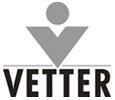Vetter, an international specialist in aseptic filling, will present on best practices in sterile manufacturing and packaging at Pharma Congress 2012 in Dusseldorf, Germany, 24 and 25 April. Company experts will address four topic areas, including RABS technology, glass monitoring in aseptic filling, and new developments in drug-delivery systems.
For the past 14 years, Pharma Congress has convened manufacturers, service providers and international regulatory bodies, including the US Food and Drug Administration, to discuss industry issues.
Global pharmaceutical and biotech firms face a constantly changing environment. Rigorous regulation, growing competition and increasing pressure to innovate are just some of the challenges the industry is confronting. Topics to be discussed at this year’s Congress include trends and advances in sterile technologies, barrier systems and state-of-the-art manufacturing processes.
Faster high-volume drug manufacture
The ability to manufacture large batches of product in a short period of time is sometimes critical. Vaccines, for example, which comprise a growing segment of the global drug market, must be produced rapidly and in great quantities. Gerald Buerkle, director of pharmaceutical production at Vetter, will explain how manufacturers and pharmaceutical service providers can meet this challenge by marrying pre-sterilized syringes with high-performance production lines. In addition, Mr. Buerkle will explore innovative methods for disinfecting and introducing pre-sterilized syringes into the cleanroom, as well as efficient waste disposal procedures for packaging materials.
RABS technology for higher-quality cleanrooms
Achieving the highest level of sterility possible is fundamental to fill and finish. An effective tool for maintaining rigorous cleanroom standards is the restricted access barrier system (RABS). Joerg Zimmermann, director of process development and implementation at Vetter, will present recent developments in RABS technology, along with a variety of RABS models. He will discuss how to incorporate RABS into the design of pharmaceutical processes; cover elements of an effective RABS, such as the integrity test for RABS gloves; and demonstrate the system’s benefits through case studies. This session will be delivered under the auspices of Pharma Congress’s ECA barrier systems conference, which will be moderated in its entirety by Mr. Zimmermann.
Requirements for autoinjector assembly
Mr. Zimmermann will also present on the assembly of patient-friendly autoinjectors, the demand for which is growing as the homecare segment expands. Using a real-life example, he will report on the benefit to patients offered by autoinjectors, as well as requirements for autoinjector assembly. A core area of focus will be the challenges of siliconisation and bulk syringe manufacturing.
Glass-breakage study
Both regulatory authorities and drug manufacturers are becoming more rigorous in their quest to prevent glass breakage during the aseptic filling process, in order to safeguard product integrity and increase patient safety. Sigrid Lieb, project manager at Vetter, presents the results of a baseline study on monitoring glass breakage during sterile production. In her presentation, she will take an in-depth look at the causes of glass breakage in conventional drug-delivery systems like syringes, vials and cartridges, and highlight critical points in the manufacturing process. She will demonstrate how quality control and quality assurance during incoming inspection can minimise the risks of glass breakage. Ms Lieb will also explain how evaluation and trending processes in manufacturing help to prevent glass breakage.

